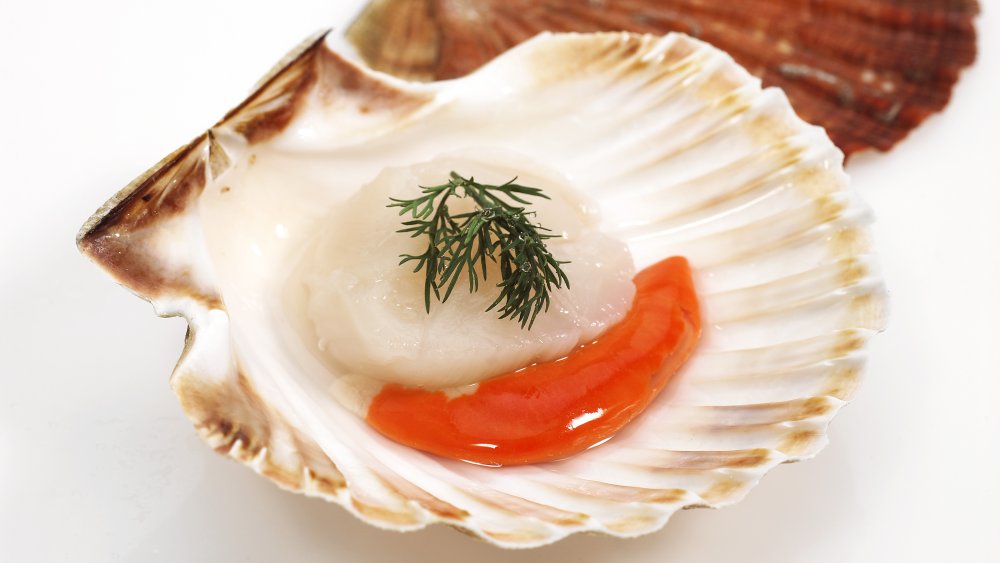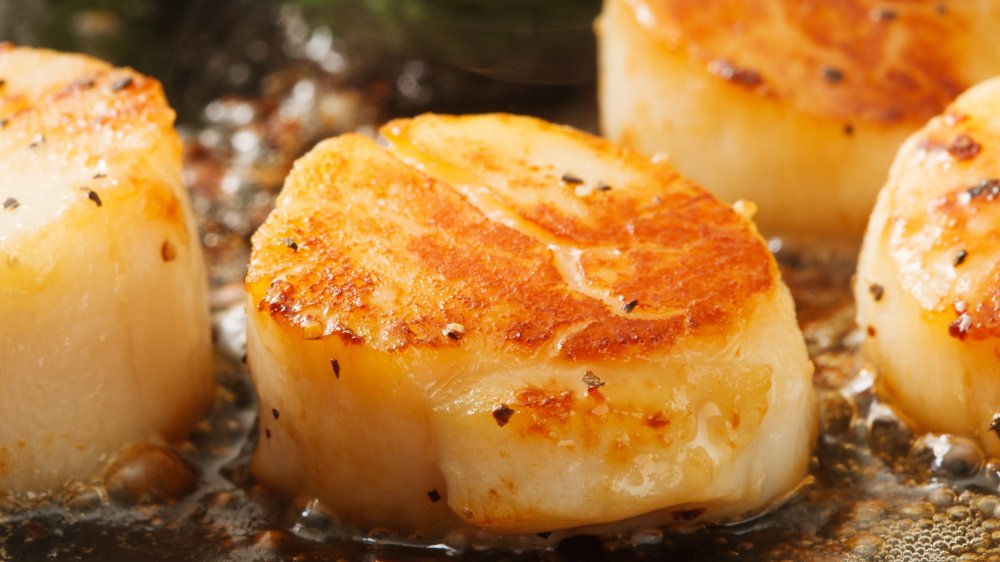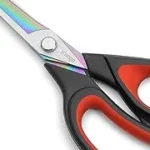If you’ve ever wondered why scallops are so expensive, you’re not alone! These delectable seafood treats have a reputation for costing a pretty penny. But have you ever stopped to wonder why these little morsels come with a hefty price tag? Well, get ready to dive into the fascinating world of scallops and uncover the secrets behind their high price.
So, why are scallops so expensive, you ask? It all comes down to a combination of factors that make them a sought-after delicacy. From their limited availability and delicate harvesting process to their unique flavor and impressive nutritional profile, there’s plenty to explore when it comes to understanding the cost of these succulent shellfish.
In this article, we’ll take a closer look at the reasons behind the high price of scallops. We’ll dive into their harvesting methods, the role of sustainability, and the demand for these luxurious delights. By the end, you’ll have a better grasp of why scallops are considered a gourmet indulgence. So, let’s get ready to unravel the mystery of why scallops come at a premium and embark on an exciting culinary journey together!

Why Are Scallops So Expensive? Unraveling the Price Mystery
Scallops, with their delicate flavor and tender texture, are a beloved seafood delicacy. However, their high price can leave many wondering why they are so expensive. In this article, we will delve into the factors that contribute to the hefty price tag of scallops and shed light on the economics behind this seafood marvel.
The Art of Scallop Fishing: A Labor-Intensive Process
Scallops are not easily harvested, and the labor-intensive process of fishing for them plays a significant role in their high price. Unlike fish that can be caught using nets or lines, scallops are usually hand-dived or hand-picked from the ocean floor. This method requires skilled divers or harvesters to individually collect each scallop, carefully ensuring that only mature and the highest quality ones are selected.
Furthermore, the fishing industry faces challenges in maintaining a sustainable supply of scallops. As scallops are slow-growing creatures, with some taking up to three years to reach maturity, overfishing or irresponsible harvesting practices can quickly deplete scallop populations. This necessitates strict regulations and quotas, which can limit the availability of scallops and further drive up their price.
Additionally, the limited accessibility of scallop habitats also adds to the expenses. Many scallop beds are located in remote areas or farther out at sea, requiring fishermen to travel long distances and incur additional fuel and transportation costs. These factors, combined with the manual labor involved in harvesting, contribute to the higher price of scallops.
The Rarity of Scallops: A Decadent Delicacy
Scallops are considered a delicacy for a reason – they are relatively rare compared to other seafood options. Unlike fish, which have a higher reproduction rate and larger populations, scallops are not as abundant. Their natural habitat and specific environmental requirements make them less prevalent in the marine ecosystem.
The rarity of scallops is partly attributed to their sensitivity to water conditions. They thrive in well-balanced, clean waters, which limits the areas where they can flourish. Furthermore, pollution, habitat destruction, and climate change pose significant threats to scallop populations, further reducing their availability.
The demand for scallops is also a contributing factor to their high price. The unique taste and texture of scallops have made them a favorite among seafood enthusiasts and food connoisseurs. As the demand exceeds the limited supply, the prices are driven up by the basic economic principle of supply and demand.
Cultivating Scallops: The Cost of Aquaculture
As the demand for scallops continues to rise, aquaculture has emerged as a means to meet the market’s needs. Cultivating scallops involves artificially reproducing and raising them in controlled environments such as hatcheries and nurseries. While this may help alleviate pressure on wild scallop populations, it comes with its own set of expenses.
Aquaculture requires significant investments in infrastructure, technology, and resources to create suitable environments for scallop growth. Maintaining the right water temperature, salinity levels, and feeding regimes are essential for the success of scallop cultivation. These factors, along with the costs of labor, equipment, and feed, contribute to the higher price of farmed scallops.
Moreover, the time and effort invested in cultivating scallops from larvae to market size are significant. It can take up to two years for scallops to reach maturity, and this extended timeframe adds to the overall cost of production. While aquaculture may provide a more sustainable solution to the demand for scallops, it still comes at a price.
Environmental Benefits: A Sustainable Seafood Choice
Despite their high price, scallops come with several environmental benefits that make them a worthwhile investment. As filter feeders, scallops play a crucial role in maintaining water quality by removing excess nutrients and particles from the environment. Their presence can help mitigate the detrimental effects of eutrophication, a process where excessive nutrients cause oxygen depletion in water bodies.
Furthermore, responsible scallop harvesting practices can support the health of marine ecosystems. By adhering to sustainable fishing methods and regulations, fishermen can minimize their impact on scallop populations and their habitats. This ensures that future generations can continue to enjoy the flavors and benefits of these delectable mollusks.
In conclusion, the high price of scallops can be attributed to a combination of factors. Labor-intensive fishing methods, limited availability, and high demand contribute to the premium price tag. Additionally, factors such as aquaculture costs and environmental benefits further add to the expenses associated with scallop production. Despite their cost, scallops remain a sought-after seafood delicacy, appreciated for their exquisite taste, texture, and positive environmental impact.
Key Takeaways: Why Are Scallops So Expensive
- Scallops are expensive because they are considered a luxury seafood item.
- Scallops have a limited supply and are difficult to harvest, contributing to their high price.
- The delicate and time-consuming process of hand-diving for scallops adds to their cost.
- Scallops are highly perishable and require careful handling and transportation, increasing their price.
- Scallops also have a unique and sought-after taste, driving up their demand and cost.
Frequently Asked Questions
Scallops are considered a luxury seafood item, known for their delicate texture and rich flavor. Many people wonder why scallops often come with a hefty price tag. In this section, we address some common questions regarding the high cost of scallops.
1. How come scallops are so expensive compared to other seafood?
Several factors contribute to the high price of scallops. Firstly, scallops are challenging to harvest. They are usually hand-dived or hand-picked, which requires skilled labor and precision. Additionally, scallops grow at a slower rate compared to other marine creatures, requiring several years to reach maturity. This slow growth means that scallops are less available and command a higher price in the market.
Furthermore, the delicate nature of scallops also adds to their cost. The harvesting process requires careful handling to avoid damage, and scallops need to be carefully transported and stored to maintain their quality. These extra precautions add to the overall cost, making scallops more expensive than other seafood options.
2. Does the location of the scallop fishery affect the price?
Yes, the location of the scallop fishery can influence the price of scallops. Scallops that are harvested in remote or hard-to-reach areas may require more time, effort, and resources to gather, leading to higher costs. Additionally, if the fishery is situated in an area with strict regulations or limited access, the supply of scallops may be restricted, resulting in higher prices.
On the other hand, scallops harvested in areas closer to markets or those with abundant scallop populations may have lower production and transportation costs, making them comparatively less expensive. Therefore, the location of the fishery plays a role in determining the price of scallops.
3. Are there different types of scallops, and does that affect their price?
Yes, there are different types of scallops, and their prices may vary. Two common types are bay scallops and sea scallops. Bay scallops are generally smaller and sweeter in flavor, while sea scallops are larger and meatier. Due to their size, sea scallops tend to command a higher price in the market.
Furthermore, variations in the availability and demand for specific scallop species can also influence their price. If a particular type of scallop is in high demand but limited in supply, its price is likely to increase. Therefore, the type of scallop and its availability play a significant role in determining the price.
4. Does the season affect the cost of scallops?
Yes, the season can affect the cost of scallops. During certain times of the year, scallops may be more abundant, leading to lower prices. However, in seasons when scallops are less available, such as during their spawning period, the price may increase due to limited supply.
The seasonality of scallops is influenced by factors such as water temperature, spawning cycles, and fishing regulations. These factors can lead to fluctuations in supply, impacting the overall cost of scallops. Therefore, the season can play a role in determining the price of this seafood delicacy.
5. Are there any other factors that contribute to the high price of scallops?
In addition to the factors mentioned earlier, several other elements contribute to the high price of scallops. One such factor is the high demand for scallops, especially in high-end restaurants and gourmet markets. The demand often outweighs the supply, driving up prices.
The quality and freshness of scallops also affect their price. Scallops that are hand-harvested and carefully handled tend to be of higher quality and command a premium price. Additionally, factors such as transport costs, market fluctuations, and the overall cost of doing business in the seafood industry can also impact the price of scallops.

Facts: The Scallop
Summary
Scallops are expensive because they are challenging to harvest and have a high demand. Their sweet and delicate taste makes them a popular choice, especially in high-end restaurants. Along with their limited availability, factors like labor costs, transportation, and market forces contribute to their high price.
Moreover, the cost of scallops can fluctuate due to environmental issues like changes in water temperature or pollution. These factors affect the supply and can lead to higher prices. Despite their high price, scallops continue to be a sought-after delicacy for seafood lovers.






